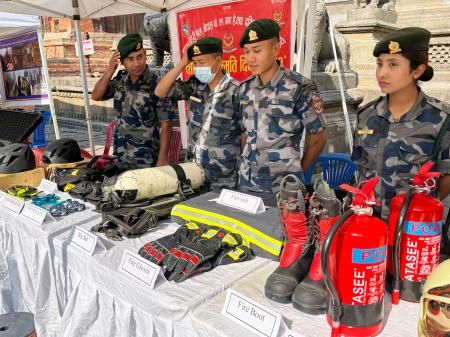Remembering Nepal's Earthquake: A Decade of Reconstruction Progress and Challenges
Ten years after the devastating 2015 Nepal earthquake, the nation continues its journey of recovery and reconstruction. The 7.8 magnitude earthquake, and subsequent aftershocks, left a trail of destruction, claiming thousands of lives and leaving millions displaced. While significant progress has been made, challenges remain in fully rebuilding lives and infrastructure. This article delves into the progress made, the hurdles overcome, and the ongoing efforts to ensure a resilient future for Nepal.
The Scars Remain: Remembering the Devastation
The 2015 earthquake remains etched in the memories of Nepalese people. The images of collapsed buildings, shattered communities, and widespread devastation are a stark reminder of the scale of the disaster. The UNESCO World Heritage sites of Kathmandu Valley, including Boudhanath Stupa and Pashupatinath Temple, suffered significant damage, symbolizing the impact on Nepal's cultural heritage. Beyond the immediate loss of life, the earthquake triggered landslides, crippled essential services, and exacerbated existing socio-economic inequalities.
Key Impacts of the 2015 Earthquake:
- Massive loss of life: Thousands perished, with many more injured.
- Widespread infrastructure damage: Homes, schools, hospitals, and vital infrastructure were destroyed.
- Economic disruption: The earthquake dealt a severe blow to Nepal's already fragile economy.
- Displacement and humanitarian crisis: Millions were left homeless and reliant on humanitarian aid.
- Damage to cultural heritage: UNESCO World Heritage sites suffered significant damage.
Reconstruction Efforts: A Decade of Progress
In the decade since the earthquake, Nepal has made considerable strides in reconstruction. The government, alongside international organizations and NGOs, launched numerous initiatives focused on:
- Housing Reconstruction: Millions of homes have been rebuilt or repaired, although the process has been slow and unevenly distributed. The government's housing reconstruction program has faced challenges related to funding, bureaucratic hurdles, and logistical difficulties in reaching remote areas. [Link to Government Housing Reconstruction Report - if available]
- Infrastructure Development: Significant progress has been made in repairing and rebuilding roads, bridges, schools, and hospitals. The focus has been on building more resilient structures capable of withstanding future seismic activity. [Link to relevant infrastructure project reports]
- Cultural Heritage Restoration: Efforts to restore damaged temples, stupas, and other historical sites have been ongoing, albeit at a slower pace than initially hoped. Preserving Nepal's cultural heritage is a crucial aspect of the reconstruction process. [Link to UNESCO reports on heritage restoration]
- Disaster Risk Reduction: Lessons learned from the 2015 earthquake have led to increased focus on disaster preparedness and mitigation strategies. This includes improving building codes, establishing early warning systems, and strengthening community resilience. [Link to relevant disaster preparedness initiatives]
Challenges and Ongoing Needs
Despite significant progress, challenges remain in achieving complete recovery:
- Funding Gaps: Securing adequate funding for the ongoing reconstruction efforts remains a major hurdle.
- Bureaucratic Delays: Complex bureaucratic processes have slowed down the reconstruction process.
- Inequitable Distribution of Aid: Access to aid and resources has not been evenly distributed across affected areas.
- Community Engagement: Ensuring meaningful community participation in reconstruction projects is vital for long-term success.
- Climate Change Impacts: Nepal is highly vulnerable to the impacts of climate change, increasing the risks of future disasters.
Looking Ahead: Building a Resilient Future
Remembering the 2015 Nepal earthquake serves as a powerful reminder of the importance of preparedness, resilience, and sustainable development. While the journey of reconstruction is ongoing, Nepal's commitment to building a more resilient future is evident. Continued international support, effective governance, community involvement, and a focus on disaster risk reduction are crucial for ensuring a complete and sustainable recovery. The stories of resilience and rebuilding from the Nepalese people serve as an inspiration for disaster recovery efforts worldwide.
Call to Action: Learn more about organizations supporting Nepal's ongoing reconstruction efforts and consider contributing to their vital work. [Link to relevant organizations]
